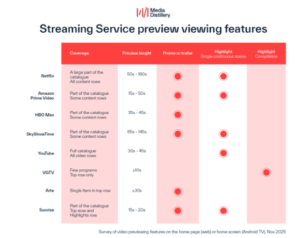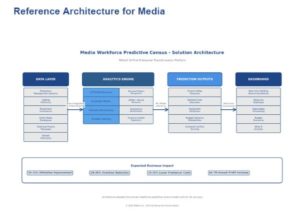
Emilio L. Zapata
Founder Tedial
With the emergence of cloud applications and services, changes in business and technology in the M&E market are accelerating. The multitude of streaming formats and platforms has pushed the technology used up to now, to implement the media supply chain to the limit, revealing its limitations and overwhelmed by the complexity of localization, UHD/HDR production and content distribution, among others. A successful media supply chain requires an efficient multiplatform reception, production and distribution of contents.
Optimising the media supply chain is no longer just about making media operations more efficient and agile within a media company, it must also take into account its distributed networked nature, incorporating partners. In this new scenario, the digital transformation demanded by the M&E market requires a network media service supply chain made up of content producers, media companies and delivery platforms. All interconnected in an intelligent way, moving and processing content between them in an efficient and agile manner in a distributed (multisite) environment.
The M&E market is expecting an expanded media supply chain with advanced out-of-the-box services, and technology companies are rethinking their integration strategy to create new products, deliver personalized interactions, and improve the application experience. To achieve this, data, applications, and systems are exposed as reusable modules that can be composed and recomposed into business capabilities and services.
With this approach, reusable modules and services become the foundation of an agile and flexible technology infrastructure. The interoperability, compatibility and resilience necessary to coordinate the set of participating actors, applications and systems resides in a cloud media integration platform (no-code iPaaS for media), which also provides the flexibility and elasticity necessary to adapt and /or change the business processes of the network media service supply chain.

Packaged Business Capabilities
Since the early days of programming, there has been a constant evolution in the way software is written, packaged and consumed to increase efficiency and reusability. Advances in software technologies have been dramatic, facilitating the development of applications using libraries of composable modules. Libraries that allow applications to be built visually, using simple drag and drop operations.
If we can quickly create business ready applications and solutions then we can design and adapt new services on demand, combining the technological capabilities of a media application integration platform, partner integrations and key customisations. These are the pre-composed solutions.
Packaged Business Capabilities (PBC) are software components that represent a well-defined business capability, functionally recognisable as such by a business user and reusable in the design of custom assembled products, applications and services. Examples are social networks delivery and UHD/HDR cameras management, among others.
The native modularity of PBCs transforms them into building blocks for applications or solutions and can be considered as aggregations of microservices. Microservices are the way we design, build and deploy modular applications, organised into well-defined services.
PBCs abstract the complexity of all the underlying technology allowing the customer to choose the components they need to create their network media service supply chain and the systems they need to integrate.
Today's user interface technology, coupled with the composability of PBCs, enhances the application experience through simple plug-n-play actions. It is the no-code approach to software development, which allows applications to be created without any prior knowledge of traditional programming languages. Citizen developers or less experienced programmers can create applications by assembling PBCs and using graphic workflow designers.
To ensure the business continuity of the M&E organisation, it is necessary to have a strategy for integrating legacy applications. This is the case for many MAM, PAM, DAM and CMS systems. Immediately, the question arises: Can a monolithic application be a PBC? The answer is yes, as long as the application offers an API organised in blocks of functionality. Each block of functionality would correspond to a different PBC, easily identifiable by a business user. It must be understood that this is a temporary solution to facilitate the digital transition to a composable architecture of the organisation.
Cloud Media Service Platform
The digital transformation demanded by the M&E market requires a network media service supply chain consisting of content producers, media companies and delivery platforms. This requires a reconfigurable architecture and forces software vendors to think about the flexibility, configurability and composability of the application stack. The efficiency and scalability of a network media service supply chain requires an efficient hybrid cloud media services platform, which includes the following components:
- Media integration platform
- Media metadata management
- Media storage management
- PBC based composable media services
- No-code media workflow designer
- Business intelligence & cost reporting
With the myriad of applications, data and devices that enterprises need to connect, and the incredible amount of time and resources enterprises spend trying to tie it all together, the media integration platform brings the interoperability, compatibility and one-to-many connectivity needed, providing the speed and agility that enterprises require.
The media integration platform creates an integrated application and system network, which is critical to accelerating digital transformation in a hybrid, multi-cloud environment. It also ensures global security for the multiple stakeholders and business processes deployed.
Every network media service supply chain is organised around media assets and their components, requiring intelligent management of their multiple associated metadata: editorial, collections, relations, strata (timeline annotation), technical, versions, rights, among others. In addition, all metadata associated with the operation must be recorded, including processing times, cost and the participation of people and partners.

The network media service supply chain requires the efficient management of distributed storage of media files in a multi-site environment. The media storage management system provides a common workspace, making it easier for applications to go to the media and not having to send the media to the applications, which is key. To do this, the software defined storage adds a layer of media abstraction, through a unique identifier for each media file, making workflows independent of physical locations (on-premises or in the cloud), which provides an additional layer of security. In addition, it is essential that the media storage management system provides an aggregation service for the multiple media files belonging to each asset.
The applications and systems of the network media service supply chain dialogue and exchange metadata and files through the media integration platform. PBCs are the building blocks of a composable enterprise and represent a well-defined, functionally recognisable and reusable business capability in the design of media services. With applications, systems and PBCs we can create composable media services, designing workflows and processes that adapt to changing customer needs.
With a network of integrated applications and systems and well-defined composable media services, improving the customer experience becomes much easier with a user-friendly media workflow designer. This component of the media services platform allows anyone in an organisation to quickly create a useful application or service for customers or to create a particular customer experience, following the no-code paradigm.
The more components are involved in a network media service supply chain, the more important it is to have specific business intelligence and detailed cost reporting services at the component level. These services are essential to identify critical points or failures in the supply chain, manage service elasticity, decision making and make the necessary changes to the workflows associated with the services.
The M&E market needs an efficient and flexible network media service supply chain, easily adaptable to changing business needs. The solution is a hybrid cloud media service platform that facilitates a composable business and is built with the pillars we have mentioned: Media integration platform, distributed media storage and metadata management, PBC based media services, a no-code media workflow designer usable by citizen developers (business users) and an analysis and monitoring system that helps us to optimise and permanently update the network media service supply chain, as well as reporting the cost of services.
The challenge is, how do we create technology that addresses these needs and makes a difference in the marketplace, helping people and businesses to do things they would not otherwise be able to do? We need to make products and solutions that make a difference and improve the customer experience and autonomy. The goal and the challenge is to implement a hybrid cloud media service platform that is flexible, scalable, resilient and secure. We are talking about composable business, architecture and technology for a flexible and future proof network media service supply chain.
The media service platform, based on the PBCs is future proof as business processes can be changed easily and new systems can be swapped in a few clicks to meet the future business needs.
- Business Models
- Digital Transformation
- Produce
- Manage
- Connect
- Cloud & Virtualization
- AI/ML, Data & Analytics









